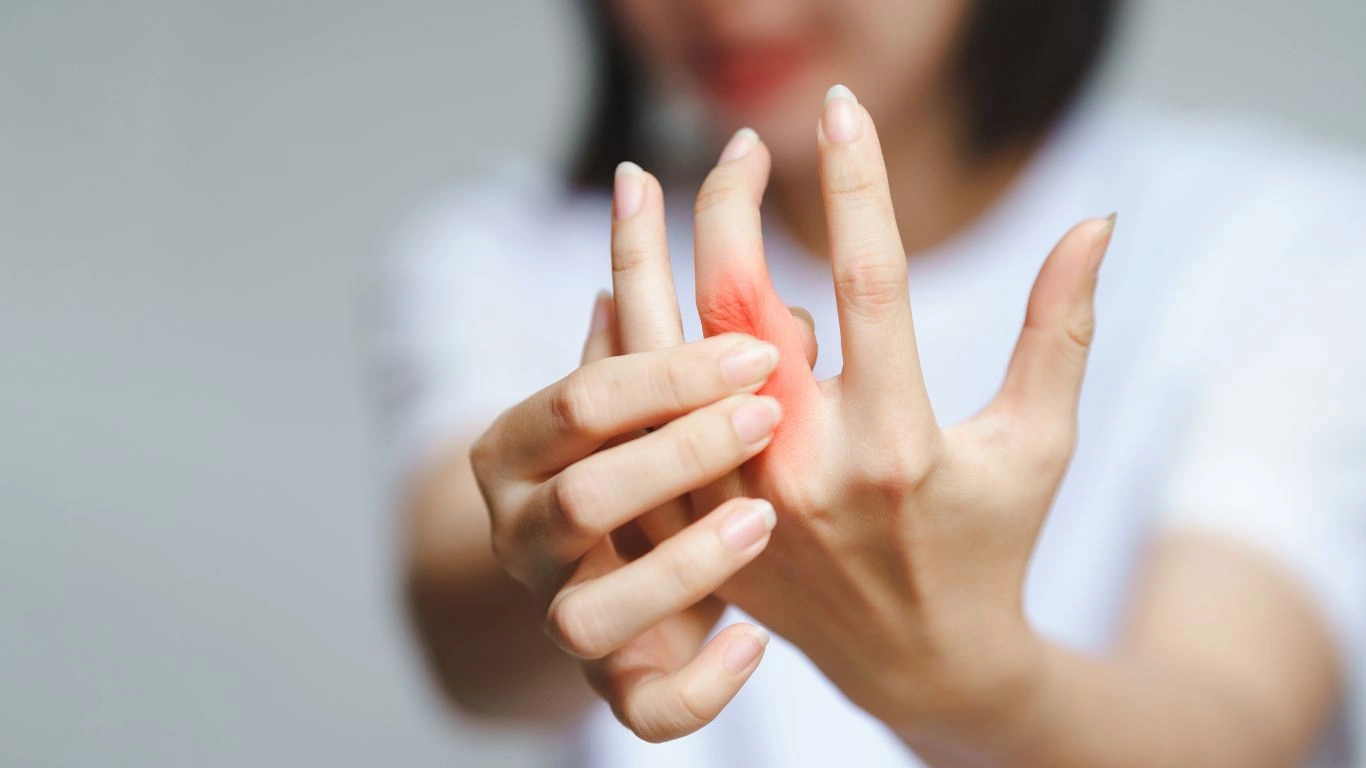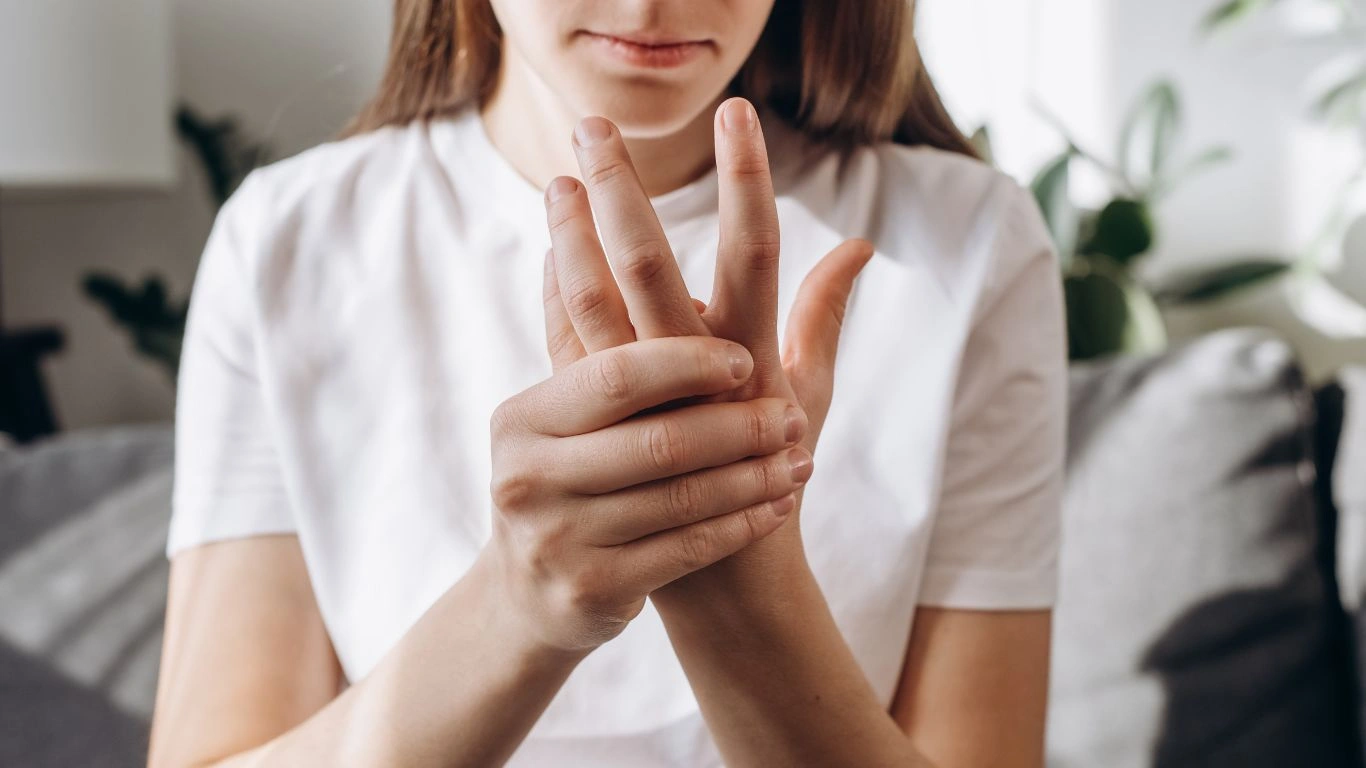Effective Strategies to Reduce Joint Stiffness in Rheumatoid Arthritis
Rheumatoid arthritis (RA) is a condition that affects millions of people worldwide, and as a Rheumatology Nurse Practitioner, I’ve seen firsthand how it can dramatically impact the lives of those who live with it. One of the most debilitating symptoms of RA is joint stiffness, which can make everyday activities feel impossible. Whether it’s struggling to open a jar, walking long distances, or simply getting out of bed in the morning, the effects of joint stiffness are undeniable. But what exactly causes this stiffness, and why does it seem to worsen at certain times of the day? In this article, I’ll dive deep into how RA leads to joint stiffness, how it affects daily life, and what can be done to alleviate it.
Understanding Rheumatoid Arthritis and Joint Stiffness

Rheumatoid arthritis is an autoimmune disease where the body’s immune system mistakenly attacks the lining of the joints. This results in inflammation, pain, and, over time, the wear and tear of cartilage, which leads to the stiffness and swelling that we associate with RA. Joint stiffness is one of the hallmark symptoms of RA, often more severe in the mornings or after long periods of inactivity. But it’s not just an inconvenience—stiff joints can lead to decreased mobility and functionality, making even simple tasks feel impossible.
The Mechanism Behind Joint Stiffness in RA
So, how exactly does RA cause joint stiffness? The stiffness you feel is a direct result of inflammation in the joints. When RA flares up, the immune system attacks the synovium, which is the lining that surrounds your joints. This causes it to become inflamed, leading to swelling and pain. Over time, chronic inflammation can cause the cartilage and bones within the joint to degrade, further limiting your range of motion and contributing to stiffness. But it’s not just about inflammation—there are a number of factors at play here, including muscle weakness and reduced fluid movement in the joints, which also play a significant role.
The Role of Synovial Fluid in Joint Stiffness
The synovial fluid in your joints acts as a lubricant to help reduce friction during movement. In a healthy joint, this fluid makes it easier for bones to glide smoothly against each other. However, when RA causes inflammation in the synovium, it disrupts the production of this fluid. Less fluid means more friction, which can lead to the feeling of stiffness, especially after periods of rest or inactivity. That’s why many people with RA find their joints feel the stiffest first thing in the morning or after sitting for long periods.
Factors That Worsen Joint Stiffness in Rheumatoid Arthritis

It’s not just the disease itself that can worsen joint stiffness, but also certain factors that exacerbate the effects of RA. As a nurse practitioner, I often talk to my patients about the various elements that can make their joint stiffness feel even worse. Understanding these triggers can help in managing the condition more effectively. Let’s take a look at some of the common factors that worsen joint stiffness in RA.
1. Prolonged Inactivity
When you’re not using your joints, like during sleep or sitting for long periods, the synovial fluid in the joints can settle, making the joints feel stiffer when you finally move. This is why people with RA often report that their joint stiffness is the worst in the mornings, after a full night of rest. While sleep is essential for overall health, long periods of inactivity can increase stiffness. Regular movement, even if it’s just a short walk, can help keep the joints more mobile.
2. Cold Weather
Cold temperatures can have a significant effect on joint stiffness. I’ve noticed that many of my patients experience more intense stiffness and pain in colder weather. Why? Cold air can reduce blood flow to the joints, making them feel stiffer. The muscles around the joints may also tighten in response to the cold, increasing discomfort. It’s important to stay warm and dress in layers during colder months to help mitigate this effect. Heat therapy, like warm showers or heating pads, can also offer relief.
3. Stress
Emotional stress doesn’t just affect your mental health—it can also affect your physical well-being, especially when you have rheumatoid arthritis. Stress can trigger the body’s inflammatory response, which can lead to flare-ups of RA symptoms, including joint stiffness. Learning how to manage stress through relaxation techniques such as meditation, deep breathing, or even yoga can go a long way in helping to control the stiffness and pain associated with RA.
How Joint Stiffness Affects Daily Life

Joint stiffness from RA doesn’t just affect your physical health—it impacts your daily routine and quality of life. Simple tasks like getting out of bed, brushing your teeth, or preparing a meal can feel daunting. The chronic pain and discomfort that come with joint stiffness can make it hard to focus on anything else, leading to frustration and a decrease in overall life satisfaction.
For example, many people with RA experience difficulty walking or standing for long periods of time. This can affect work, social activities, and even basic household chores. In my practice, I’ve seen how debilitating these everyday challenges can be. It’s not just about the pain—it’s about the feeling of helplessness that often accompanies RA. Over time, this can lead to a reduction in activity levels and a decline in overall health, making it even harder to manage joint stiffness.
In the next section, we’ll discuss some ways to reduce joint stiffness and improve mobility. But before we dive into treatment options, it’s essential to understand that every RA journey is unique. What works for one person may not work for another, which is why personalized care is so important. Keep reading to find out what strategies can help make life with RA a little easier.
Managing Joint Stiffness: Effective Strategies for Relief

As someone who works closely with people suffering from rheumatoid arthritis (RA), I can tell you that while joint stiffness can be incredibly frustrating, there are several ways to reduce its impact and improve your overall quality of life. Managing RA is all about finding the right combination of treatments and lifestyle changes that work for you. It’s a journey—one that requires patience, persistence, and a bit of trial and error. So, let’s explore some effective strategies for managing joint stiffness and pain in RA.
1. Medications: A Key Component of RA Management
One of the first things I discuss with patients when it comes to managing RA is medication. While medications won’t cure RA, they are crucial in reducing inflammation and preventing joint damage, which ultimately helps to alleviate stiffness. There are a few different classes of drugs that are commonly prescribed for RA:
- Nonsteroidal Anti-Inflammatory Drugs (NSAIDs): These are often the first-line treatment to reduce pain and inflammation. They can help provide quick relief from stiffness but are not a long-term solution.
- DMARDs (Disease-Modifying Antirheumatic Drugs): DMARDs are the backbone of RA treatment. They can help slow down the progression of the disease and reduce inflammation over time. Methotrexate is the most commonly prescribed DMARD, but there are others like hydroxychloroquine and sulfasalazine.
- Biologics: In cases where traditional DMARDs aren’t effective, biologic drugs might be prescribed. These medications target specific components of the immune system and are often used when RA is more severe or resistant to other treatments.
- Corticosteroids: These powerful drugs can provide quick relief from inflammation, but they come with potential side effects, so they are usually reserved for flare-ups or short-term use.
It’s essential to work closely with your doctor to find the right medications for your specific needs. And while medications are incredibly effective, they are often most beneficial when combined with other lifestyle strategies.
2. Physical Therapy and Exercise: Keeping Joints Moving
One of the best ways to prevent joint stiffness is to keep moving. This doesn’t mean running marathons or lifting heavy weights—it’s about gentle, consistent movement that helps to keep the joints limber and reduce stiffness. Physical therapy can be a great tool to learn proper techniques and exercises that target areas affected by RA. A physical therapist can guide you through exercises that improve strength, flexibility, and mobility.
Low-impact exercises such as swimming, biking, and walking are excellent for people with RA. These activities help improve joint function without putting too much strain on them. Stretching is also important—gentle stretches can help increase your range of motion and decrease tightness in muscles and tendons surrounding the joints.
Personally, I’ve seen so many patients benefit from incorporating daily stretching and light movement into their routines. It’s all about consistency, not intensity. And remember, the goal is to find activities that you enjoy. This can make sticking to an exercise routine much easier in the long run.
3. Heat and Cold Therapy: Simple but Effective Relief
When it comes to managing joint stiffness, one of the easiest and most accessible treatments is heat and cold therapy. Both methods can help reduce pain and stiffness, but they work in different ways:
- Heat Therapy: Applying heat to your joints can increase blood flow, relax stiff muscles, and reduce pain. Warm baths, heating pads, or even a warm towel applied to the affected area can provide relief. Heat is especially helpful during the morning stiffness that many people with RA experience after waking up.
- Cold Therapy: Cold compresses or ice packs can numb the pain and reduce inflammation. Cold therapy is great for flare-ups, as it can help decrease swelling and prevent the joints from becoming too inflamed.
In my experience, a combination of both heat and cold therapies works best for many people. For example, applying a heating pad before exercise can loosen up stiff joints, while an ice pack afterward can help reduce inflammation and swelling.
4. Diet: The Role of Nutrition in Joint Health
What you eat can have a direct impact on your RA symptoms. There’s growing evidence that a healthy, anti-inflammatory diet can help reduce inflammation in the body and, in turn, decrease joint stiffness. While there’s no magic food that can cure RA, there are definitely foods that can help manage the condition.
Focus on foods that are rich in antioxidants and omega-3 fatty acids, both of which have anti-inflammatory properties. Examples include:
- Fatty fish: Salmon, mackerel, and sardines are all rich in omega-3s.
- Fruits and vegetables: Berries, leafy greens, and cruciferous vegetables like broccoli and cauliflower are packed with antioxidants.
- Whole grains: Brown rice, quinoa, and whole-wheat bread provide fiber, which can help reduce inflammation.
- Nuts and seeds: Walnuts and flaxseeds are great sources of omega-3 fatty acids.
On the flip side, some foods can contribute to inflammation and worsen RA symptoms. It’s best to avoid or limit processed foods, sugary snacks, and red meat. Additionally, some people with RA find that dairy or gluten exacerbate their symptoms, so it’s worth paying attention to how certain foods affect your body.
In my practice, I’ve seen patients who’ve made simple dietary changes that have led to noticeable improvements in joint stiffness. While diet alone won’t cure RA, it can certainly be part of an effective management plan.
Alternative Therapies: Exploring Holistic Approaches

Alongside traditional treatments, many people with RA find relief from joint stiffness through complementary therapies. These holistic approaches can help improve overall well-being and reduce inflammation, though they should be used in conjunction with conventional medical treatments, not as replacements.
1. Acupuncture
Acupuncture, a traditional Chinese medicine practice, involves inserting fine needles into specific points on the body. It’s thought to help balance the body’s energy and promote healing. Some studies have shown that acupuncture can help reduce pain and improve mobility in people with RA, although more research is needed. Still, many of my patients report feeling better after acupuncture sessions, with some experiencing a reduction in stiffness and discomfort.
2. Massage Therapy
Massage therapy can help relieve tension in the muscles surrounding the joints, which can contribute to stiffness. It’s not only relaxing, but it can also improve circulation and reduce inflammation. I often recommend therapeutic massage as part of a comprehensive RA management plan, as it can help reduce stress and improve flexibility in the affected joints.
3. Mind-Body Techniques
Mindfulness practices like yoga and meditation can help reduce stress and improve overall health. Stress can exacerbate RA symptoms, so finding ways to relax both physically and mentally can make a big difference. Many RA patients find yoga particularly helpful, as it can increase joint flexibility while promoting mental relaxation. Meditation and deep breathing exercises are also great for reducing stress and improving pain tolerance.
When to See a Doctor: Knowing Your Limits

While many of the strategies I’ve mentioned can help manage joint stiffness, it’s essential to know when to seek professional medical help. If you notice that your symptoms are becoming more severe, or if you experience joint deformities or significant difficulty moving, it’s important to consult with a rheumatologist or another healthcare professional. The earlier you address potential complications, the better your long-term prognosis will be.
Working closely with your healthcare team is key to finding the right combination of treatments that will help you manage rheumatoid arthritis and reduce joint stiffness. Remember, RA is a chronic condition, but with the right care, you can still live an active and fulfilling life.
Long-Term Management of Rheumatoid Arthritis and Joint Stiffness

As we continue to explore ways to manage rheumatoid arthritis (RA) and reduce joint stiffness, it’s important to keep in mind that RA is a lifelong condition. While we can’t cure it, effective long-term management strategies can significantly improve quality of life. Over the years, I’ve seen many patients experience substantial relief and regain mobility with the right combination of treatments, lifestyle changes, and support. It’s all about consistency, ongoing communication with your healthcare team, and being proactive about your health.
1. Monitoring Disease Progression
One of the key aspects of managing RA over the long term is regularly monitoring the progression of the disease. It’s easy to assume that once the initial symptoms are under control, there’s no need for further check-ups—but that’s not the case. RA can change over time, and keeping an eye on how it’s affecting your joints and overall health is crucial for preventing damage and maintaining function.
Routine visits to your rheumatologist are essential. During these visits, your doctor will evaluate your joint health, check for signs of inflammation, and assess how well your treatment plan is working. Blood tests, imaging studies, and physical exams are all tools your doctor can use to gauge whether the disease is progressing or if adjustments to your treatment plan are needed.
From my experience, regular follow-ups are invaluable. They not only allow your doctor to catch any early signs of complications, but they also give you the opportunity to discuss any new symptoms you might be experiencing. Staying on top of your treatment and monitoring changes can help you maintain a better quality of life in the long run.
2. Working With a Multidisciplinary Team
Managing RA is rarely a solo endeavor. While your rheumatologist is your primary care provider for this condition, you may also benefit from a multidisciplinary team of healthcare professionals. This can include physical therapists, occupational therapists, dietitians, mental health professionals, and even pain management specialists. Each of these experts can provide valuable support in addressing different aspects of RA—from joint mobility and strength to mental well-being and nutritional needs.
For example, I’ve seen patients greatly benefit from working with an occupational therapist who helps them find ways to adapt their home and work environments to make daily tasks easier. Whether it’s using assistive devices to open jars or finding a more comfortable sleeping position, small adjustments can make a huge difference in reducing joint strain and stiffness.
Dietitians, too, play an important role. They can help you fine-tune your diet to reduce inflammation and improve overall health. I’ve seen patients who struggle with joint stiffness find relief by following an anti-inflammatory diet and incorporating certain nutrients like vitamin D, calcium, and omega-3 fatty acids.
3. Mental Health and RA: Addressing the Emotional Impact
It’s no secret that living with rheumatoid arthritis can take a toll on your emotional well-being. Constant joint pain and stiffness, along with the frustration of dealing with a chronic condition, can lead to feelings of anxiety, depression, or even social isolation. As someone who’s seen these emotional challenges firsthand, I can tell you that it’s important to address your mental health as part of your RA treatment plan.
Therapies like cognitive behavioral therapy (CBT), mindfulness meditation, and relaxation techniques can be very effective in helping people cope with the emotional strain of RA. Regularly practicing stress-relief techniques not only benefits your mental health but can also have a positive impact on your physical health by reducing inflammation and muscle tension.
Support groups, either in person or online, can also be a helpful way to connect with others who are going through similar experiences. Knowing you’re not alone in your journey can provide comfort and encouragement. In fact, many of my patients have told me that joining a support group made them feel less isolated and gave them new coping strategies for living with RA.
Exercise, Rest, and Balance: Finding the Right Routine

One of the biggest challenges people with RA face is finding the right balance between exercise and rest. It’s tempting to want to rest all the time when you’re experiencing joint stiffness and pain, but complete inactivity can make things worse. On the other hand, overdoing it with exercise can lead to more strain and injury. So, how do you find that sweet spot?
As a healthcare provider, I’ve always emphasized the importance of a balanced approach. Gentle, low-impact exercise is ideal for those with RA. Swimming and water aerobics are fantastic options because the buoyancy of the water helps support your body, reducing stress on your joints while allowing for movement. Walking, stationary cycling, and yoga are also great choices. It’s not about pushing yourself to the limit but about consistency and maintaining joint flexibility and strength over time.
Rest is also crucial for managing RA. While staying active is important, so is giving your joints time to recover. If you’ve had a busy day or experienced a flare-up, it’s okay to take it easy and allow your body to rest. Napping, getting a good night’s sleep, and using techniques like heat therapy can help relax your muscles and ease stiffness. It’s all about listening to your body and giving it what it needs—whether that’s a little more activity or some much-needed rest.
Understanding RA Flare-Ups and How to Handle Them
Living with rheumatoid arthritis means learning how to manage flare-ups. A flare-up occurs when the symptoms of RA worsen, leading to increased pain, stiffness, and inflammation in the joints. These can be triggered by a variety of factors, including stress, infection, physical exertion, or changes in weather. Unfortunately, flare-ups are an inevitable part of the condition, but with the right strategies, they can be managed effectively.
During a flare-up, it’s important to take extra care of your joints. Resting, applying heat or cold therapy, and following your prescribed medication regimen are key components of managing a flare. It’s also helpful to track your flare-ups in a journal, noting any potential triggers, so you can identify patterns and take steps to avoid them in the future.
If a flare-up becomes severe or persistent, it’s important to reach out to your healthcare team for guidance. In some cases, your doctor may need to adjust your treatment plan or prescribe stronger medications to bring the flare under control.
Disclaimer
It’s important to note that while the information in this article is based on my professional experience as a Rheumatology Nurse Practitioner, it is not intended to replace medical advice. Always consult your healthcare provider for personalized treatment and management plans tailored to your specific needs. Rheumatoid arthritis is a complex condition that varies from person to person, so what works for one individual may not work for another.
If you’re living with RA or suspect you may have it, please reach out to your doctor or a rheumatologist for a thorough evaluation and to discuss the best treatment options for your condition.
References
For more information on rheumatoid arthritis, please refer to trusted sources like The American College of Rheumatology or other reputable medical organizations dedicated to arthritis research and management.

Tarra Nugroho is a dedicated Nurse Practitioner with a strong foundation in family and preventive care. She brings both compassion and clinical expertise to her practice, focusing on patient-centered care and health education. As a contributor to Healthusias.com, Tarra translates medical knowledge into clear, empowering articles on topics like women’s health, chronic disease management, and lifestyle medicine. Her mission is simple: help people feel seen, heard, and informed—both in the clinic and through the content she creates. When she’s not caring for patients, Tarra enjoys weekend hikes, plant-based cooking, and curling up with a good health podcast.






